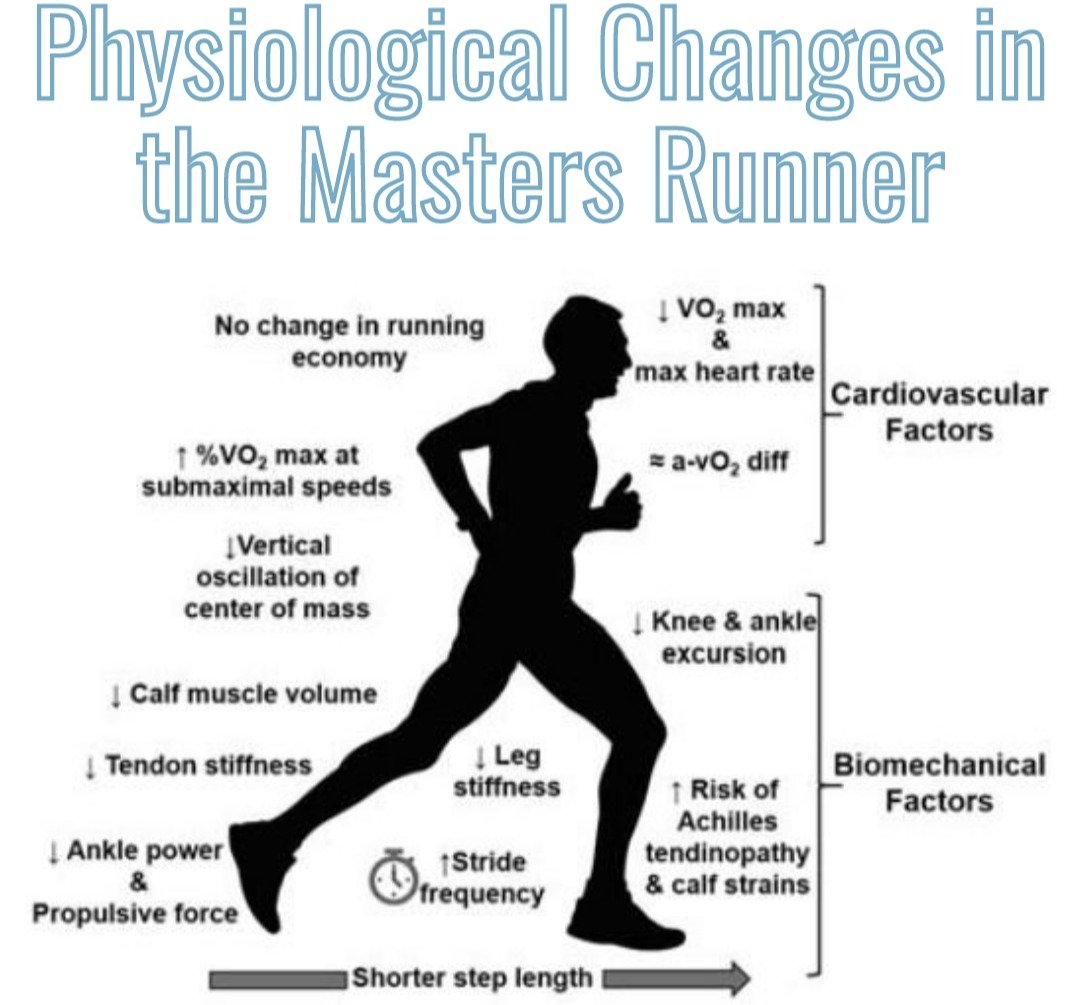Tips for the Healthy Masters Runner
Unfortunately, I hear it all the time. Patients telling me their doctor said they should stop running simply because they're older or have some mild arthritis on an x-ray. Yes - as we age, our body changes. Most pertinently to orthopedic health, we lose muscle mass and the ability to build mass as easily, we lose bone mineral density and have less water content in our tendons making them stiffer and less able to tolerate stress.
The good news? A lot of these things can be blunted and slowed with running and training correctly. Let's dispel some myths about running late into life and talk some of the ways to adapt your training to ensure you are able to run for many years to come!
Running & Arthritis
The biggest myth we need to dispel is the notion that running causes arthritis, or if you have arthritis that you need to stop running. There is simply no solid evidence saying that recreational running directly causes nor advances arthritis. In fact, studies have shown that a moderate amount of running can be protective against arthritis and promotes positive orthopedic changes in addition to the obvious cardiovascular benefits.
Here's what the science says:
Use is better than abuse. The relationship between arthritis and running volume is U-shaped. Non-runners and high-volume competitive runners for > 15 years have a higher incidence of arthritis than moderate volume, recreational runners.
Our running mechanics change as we age. Your gait does change as you get older. Most prominently a reduction in ankle power and propulsive force from your calves.
Pay attention to calves and Achilles. Achilles tendinopathy occurs when training loads exceed maximal capacity of the tendon, where we know propulsive force declines. Use caution with modes of running that increase demand on the calf like on soft surfaces, hills or using minimalist or 0 drop shoes.
Protect your ticker - aerobic capacity of lifelong endurance runners in their 80s are reported to be nearly twice as high as inactive age-matched adults
Pump some iron - running alone is insufficient to prevent the decline in muscle qualities. Although it helps with bone mineral density and maintenance of muscle mass, a strength program is vital to blunt the effects of aging
HOW to Keep Running for a Lifetime
1. Strength Train. We know you need it, here's how to execute it:
2-3 days/wk - At least 1 should be heavy to load tendons, muscles and bone for growth & adaptation. The other 1-2 days, focus on lighter loads and faster movement through full range to promote joint health
CALVES - you really can never do enough calf strengthening as a runner. Load it up with progressive weight for strong resilient tendons
Plyos - promotes springy muscles and tendons and motor control as the firing of our nervous system tries to decline
2. Range of Motion & Tissue Pliability.
Joints, muscle and fascia stiffen as we age. Incorporate total body movements that create active stretch of muscles into your training, warm up and cool down. Prioritize dynamic stretching through full range over simple static stretching
3. Volume & Intensity Adjustments.
Mild reductions and management of weekly volume as previously mentioned can reduce incidence if you are running high mileage (30-40+ miles/wk). If you're still racing, drop a day of junk/recovery mileage and maybe 1 speed day. Speed work can play a role in blunting the slowing of neuromuscular firing, don't be afraid of it if your body tolerates it.
4. Prioritize Recovery. What used to look like hard-easy-hard in your early years should look more like hard-easy-easy, repeat. Let your easy days be truly easy. If you're dropping a junk mileage day of running, sub in an active recovery day of biking or swimming to challenge the body in different ways and planes. Try to take down weeks ever 6-10 weeks where you drop your weekly mileage by 10-25% depending on what your body needs.
5. Mechanical Considerations. Taking a look at HOW you're running and making it more efficient can help support healthy joints. Hard landings on pavement loads weight bearing surfaces where arthritis occurs. Getting a gait analysis and working with an expert to reduce your impacts and optimize your movement could add more years you your running life.
The most important takeaway other than executing these steps is knowing that all of our bodies react differently. It is important to be in tune with YOUR body's response to varying mileage, intensity or modes of training. Find a groove and a routine that works best for you. 40+ miles/wk may be totally fine for you but your friend has a hard time pushing over 20 or going back to back days. Listen to and learn how your body responds for a lifetime of enjoyment in running.
If you're ready to optimize your movement reach out to see how we can help you today! We offer both in person and virtual gait analyses for runners near and far!




